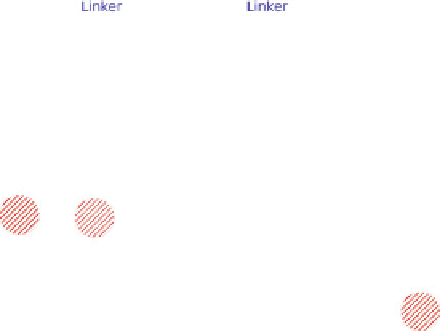Information Technology Reference
In-Depth Information
"0"
"1"
"NULL"
+e
+e
+e
Fig. 6.
The decatriene: structure (top) and state encoding (bottom).
conformations and logic states 0, 1 and NULL. In the ground-state, with no
electric field applied, the molecule configuration is the one encoding the NULL
state. When an electric field is applied in the vertical direction (called clock field)
the molecule ends up in an excited state: a simultaneous application of another
electric field parallel to the active dot axis (called switching field) implies the
charge localization on one of the two dots, depending on the sign of the switch-
ing field, leading the molecule into the logic state 0 or 1. This organization
recalls the behavior of the other QCA implementation currently considered as
promising, the magnetic one [
12
,
13
]. As demonstrated in [
14
,
15
] for the case of
nano magnetic Logic, respecting these constraints paves the way to the feasibil-
ity of complex circuits, once technology will be mature enough to manage the
fabrication of molecular QCA structures.
One of the real molecules proposed as QCA device is a mixed-valence complex
based on one iron atom (Fe) and one ruthenium atom (Ru) [
8
]. The molecule
schematic structure is shown in Fig.
7
(A): the two dots are vertically organized
and are given by the metal atoms, while the ending nitrogen atom (N) plays
the role of binding element allowing the molecule to be attached to a silicon
substrate. Its functionality properties have been verified placing the oxidized
form of the molecule between a silicon surface and a mercury tip, thus realizing
a plate capacitor. Applying different voltages (electric fields) the free charge
in the molecules moves from one dot to the other generating a change in the
differential capacitance. By measuring a change in the differential capacitance
an experimental demonstration of the charge motion inside the molecule has
been given as a consequence of the external field (Fig.
7
(B)).
































































Search WWH ::

Custom Search